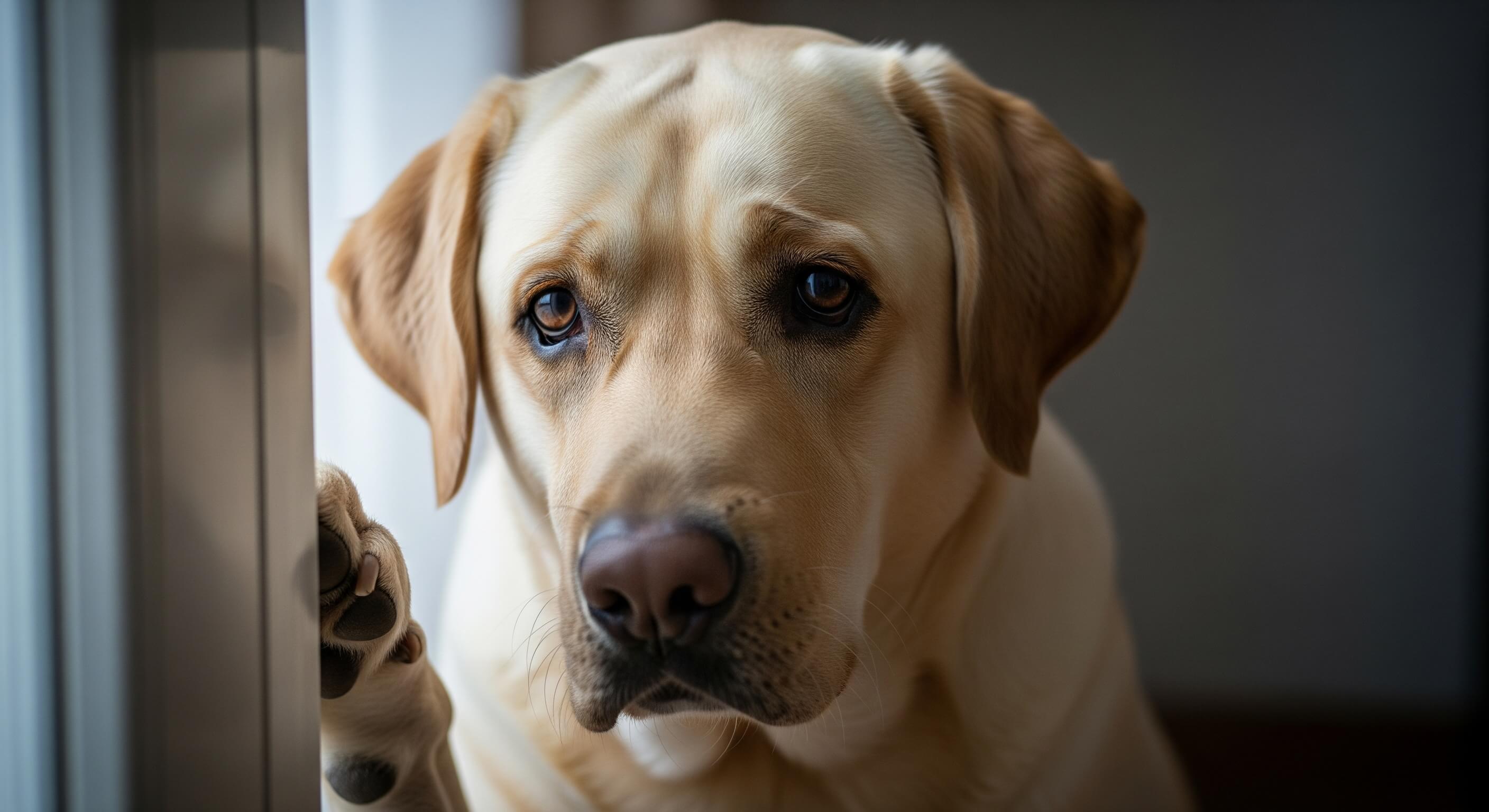If your Labrador turns into a pacing, whining mess every time you grab your keys, you're not alone. Labradors are famously friendly, loyal, and family-focused—which is exactly why they struggle with being left alone. This post dives deep into pack mentality anxiety and family bonding issues in Labs, and gives you expert, real-life tips to soothe their separation stress.
Why Labradors Struggle With Being Alone
Originally bred to work alongside humans—retrieving nets, fish, or fowl—Labradors thrive on companionship. They’re pack dogs at heart, and that’s a beautiful thing… until you have to leave them alone for eight hours.
- Pack Mentality Anxiety: Labs don’t just love you—they feel part of you. Being apart disrupts their sense of safety and order.
- Family Bonding Issues: A deeply attached Lab might bark, chew, or panic if separated from their favorite human.
- They’re Empathetic: Labs mirror your emotions. If you’re stressed about leaving, they pick up on it instantly.
Signs of Separation Anxiety in Labs
Look for these behaviors, especially when you're preparing to leave or just after you walk out:
- Excessive barking, whining, or howling
- Destructive chewing (especially around doors and windows)
- Pacing or escape attempts
- House soiling (even in well-trained dogs)
- Over-the-top excitement when you return
How to Calm a Labrador with Separation Anxiety
Helping your Lab feel safe when alone takes time and consistency. Here’s what works:
1. Build Solo Confidence Gradually
Start with short departures and slowly increase the time. Reward calm behavior upon your return, but don’t make it a big deal—this teaches your Lab that being alone is normal, not scary.
2. Create a Safe, Predictable Routine
Dogs thrive on routine. Morning walks, feeding schedules, and quiet-time rituals (like a chew toy before you leave) help reduce anxiety triggers.
3. Use Calming Products
- Interactive feeders like KONG toys
- CBD chews (vet-recommended)
- Snuffle mats for scent enrichment
- Comforting scents (like an unwashed shirt of yours!)
4. Avoid Punishment
Chewed shoes aren’t rebellion—they’re anxiety relief. Stay calm and redirect instead of scolding.
5. Consider Professional Help
Severe cases may benefit from a certified trainer or veterinary behaviorist. Sometimes medication, in conjunction with training, is the most humane path forward.
Real-Life Story: Max the Velcro Lab
Max, a 3-year-old Lab I worked with, barked nonstop whenever his owner left. After two weeks of crate training with a routine, and using a snuffle mat plus his owner's unwashed t-shirt, Max began settling within 10 minutes of departure. Within a month, he’d nap peacefully when alone.
Summary: Be Patient, Be Present
Labradors aren’t needy—they’re loyal to a fault. With compassion, consistency, and a little creativity, you can help your Lab learn that time apart doesn’t mean the pack is broken. And remember: what feels like a challenge now often becomes your strongest bond later.
Helpful Do’s and Don’ts
✅ Do's
- Do: Provide mental stimulation daily
- Do: Normalize short departures
🚫 Don’ts
- Don’t: Greet or leave with dramatic flair
- Don’t: Punish anxiety behaviors
Recommended Products
- Outward Hound Hide-A-Squirrel Puzzle Toy
- PetSafe Treat Dispensing Ball
- Zesty Paws Calming Bites (CBD blend)
- Snuggle Puppy with Heat Pack (for comfort)
Frequently Asked Questions (FAQs)
1. What causes separation anxiety in Labradors?
2. Can separation anxiety in Labs be cured?
3. How long does it take to fix separation anxiety?
4. Should I crate my Lab if they have separation anxiety?
5. Do calming supplements really work?
6. Is getting a second dog a good idea?

About SniffnTail
SniffnTail is your go-to destination for everything pets. From helpful advice, tips, and insights to thoughtfully selected products and resources, we’re here to support pet owners at every stage of their journey. Whether you're caring for a playful pup, a wise old cat, or anything in between, SniffnTail offers tools and knowledge to make pet parenting easier and more joyful.
Related Articles
 Health & Wellness • 6 min read
Health & Wellness • 6 min readDIY Dog Tooth Brushing Routine: Tools, Timing & Techniques
Learn how to brush your dog's teeth at home with our expert guide on DIY dog dental care, featuring tools, timing tips, and techniques for healthy dog oral hygiene.
 Health & Wellness • 12 min read
Health & Wellness • 12 min readHow To Reduce Dog Shedding: 10 Expert-Backed Tips for a Healthier Coat & Cleaner Home
Stop worrying about dog hair! Discover 10 veterinarian-backed and expert-approved tips to drastically reduce dog shedding, improve coat health, and keep your home cleaner. Learn about diet, grooming, medical causes, and more.
 Health & Wellness • 8 min read
Health & Wellness • 8 min readCavalier King Charles Spaniel Neurological Pain and Anxiety: Signs, Support & Solutions
Explore how CM/SM-related behavioral changes and pain-induced fear affect Cavalier King Charles Spaniels. Learn to recognize signs of neurological pain and support your dog with expert tips.

